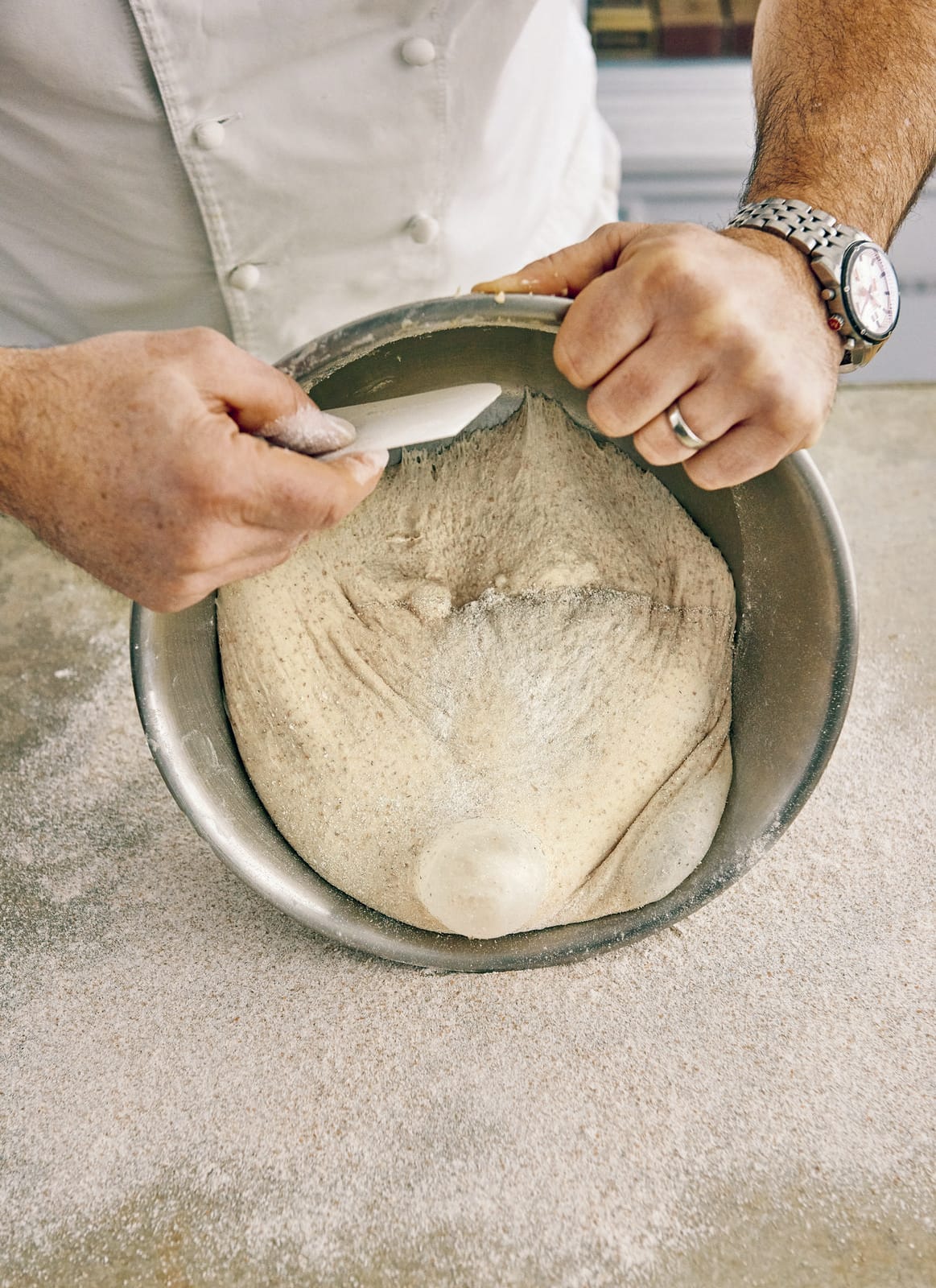Richard Bertinet, the Breton baker, has become synonymous with this increasingly popular bread. Here he shares with our readers his own recipe. Set aside a couple of days and the perfect loaf will be yours to savour!

- To make your starter ferment take 50g of rye or spelt flour, 150g strong white bread flour, 20g honey and 100ml water which should be at body temperature. Mix these ingredients together until you have a softish dough.
- Cut open a large freezer bag and cover your bowl, securing it with an elastic band. Leave in a warm place around 30oC for 24-36 hours. Yeasts and bacteria from the flour and the environment feed on the sugars in the flour. As the starter begins to ferment, the lactic acid bacteria, also found in yoghurt, cheese and other fermented milk products, make the starter acidic; it is this acidity that gives sourdough its characteristic tang.
- Stage two of the ferment requires you to add 30g spelt flour, 280g strong white flour and a further 150ml of warm water to the starter, mixing the additional ingredients in well. Cover again and leave as before for a further 24 hours. Ensure your temperature remains around 22-24oC so as not to stall the fermentation. The starter will smell sweet and lightly fermented.
- Once your starter ferment is ready, use 200g of your mixture, keeping the remainder covered in the fridge for future use. You will however have to refresh the ferment you do not use immediately as you have to keep it going.
- Returning to your first batch add 400g of strong white flour or 350g strong white flour and 50g rye flour plus 200g warm water to the 200g of your ferment. Mix until you have a thick dough. Cover and leave for a further 12 hours at 24oC or above, when the dough will have started to ferment. At this point, you want to slow down the fermentation so that the dough can mature gently so place it in the fridge for a day or two. It is ready to use when you can pull back the dough’s skin and see it is is butter coloured and looks like a sponge. It should feel alive and sticky with a distinctive acidic smell.
- To make two large loaves, take 90g rye flour, 700g strong white flour, 400g stage 4 ferment, 650ml luke-warm water, 20g salt, additional flour for dusting. Have ready two wicker proving-baskets or two bowls lined with baking cloths. You will also need two upturned baking trays for transferring the loaves to the oven.

- Combine the flours in a large mixing bowl, add ferment by ripping it into pieces and mixing into the flour at the same time. Add water and mix well using your baking scrapper until the dough comes together. Turn onto an unfloured work surface and work the dough for about 10 minutes. Sprinkle salt over the top and continue to work the dough until it is smooth, strong, and elastic.
- Form the dough into a ball and return to a lightly floured mixing bowl, covered with a clean tea towel and rest for an hour. Turn the dough out onto a lightly floured surface, fold it and return to your bowl, resting it for a further hour.
- You are now ready to shape your two loaves. Turn the dough onto your lightly floured surface, dividing it into two equal pieces. Form a ball from each; dust your proving basket well with flour. Put the dough ball, seam side up into your floured container and leave to prove for 16-18 hours in a cooler place 17-18oC. Any warmer than this and the proving time will need to be reduced so keep an eye on your dough. Preheat your oven to 250oC one hour before you want to bake the loaves. Put your baking sheets or baking stones in the oven to get hot.
- Your dough should double in size and be springy to the touch. Turn each ball onto a lightly floured wooden peel or flat baking sheet with the rounded side of the ball uppermost. Slash the top with a sharp blade. Open the door to your hot oven, quickly misting the inside with a water spray. Slide the loaves onto the hot baking stones or sheets and spray some more water over quickly before shutting the door. Bake for five minutes then reduce the heat to 220oC and bake for a further 25 minutes.
- They are ready when the crust is a dark golden brown. The loaf should sound hollow when tapped underneath. If they are not ready, bake for a further 10-15 minutes at 210oC. Cool on a rack before eating.
To visually follow how Richard prepares the starter ferment and sourdough loaves, take a look at his two YouTube videos which show how to mix the dough by hand youtube.co.uk








